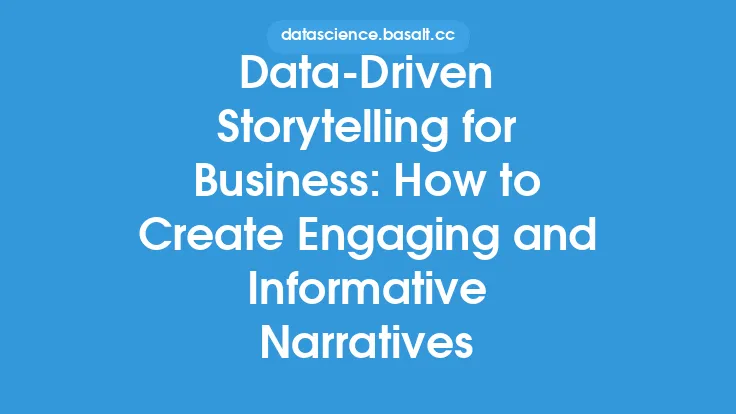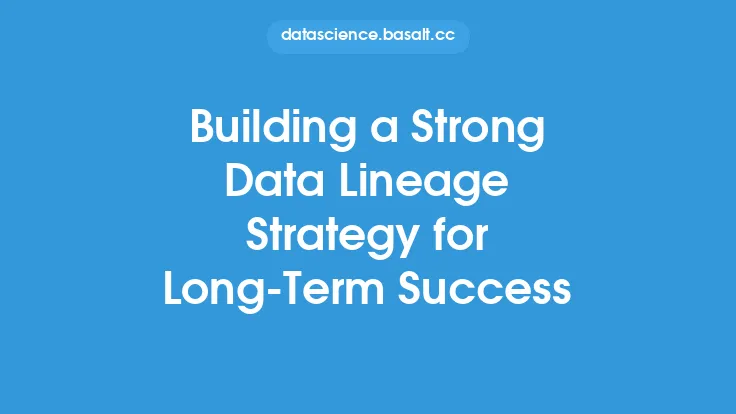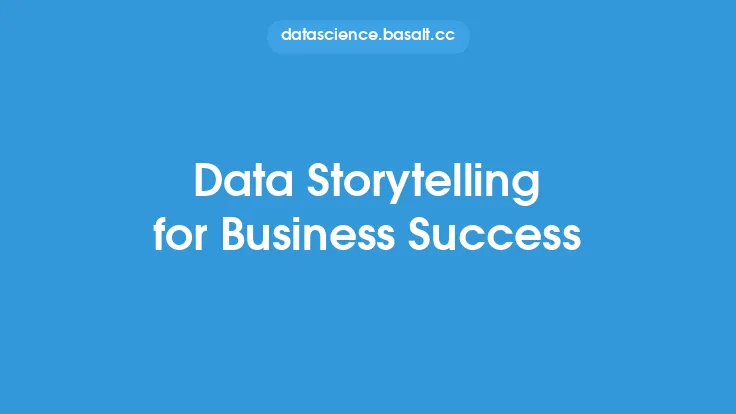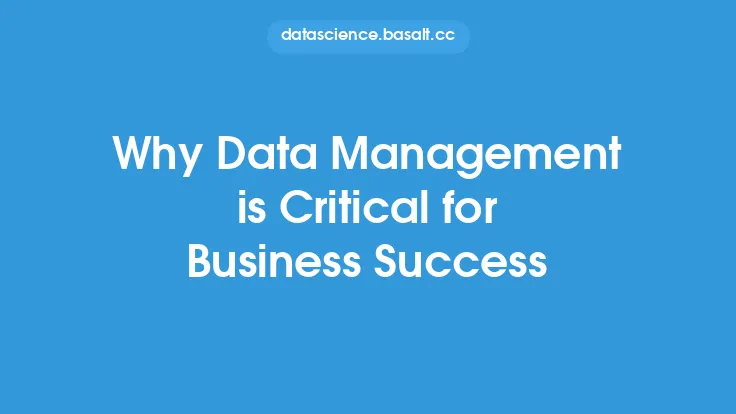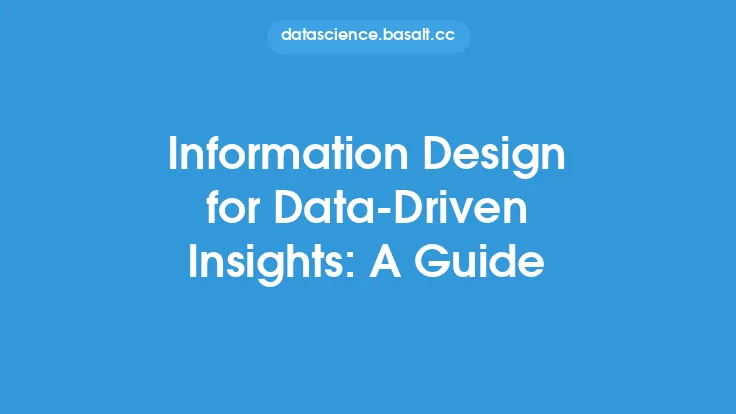In today's fast-paced business landscape, organizations are constantly seeking innovative ways to drive success and stay ahead of the competition. One key strategy that has gained significant attention in recent years is the use of data-driven narratives. By leveraging the power of storytelling and combining it with data analysis, businesses can create compelling narratives that inform, engage, and inspire their audiences. In this article, we will delve into the world of data-driven narratives for business success, exploring the concepts, techniques, and best practices that can help organizations harness the full potential of their data.
Introduction to Data-Driven Narratives
Data-driven narratives are stories that are built around data and analytics, with the goal of conveying insights, trends, and patterns in a clear and concise manner. These narratives can take many forms, including reports, presentations, dashboards, and even interactive visualizations. The key characteristic of data-driven narratives is that they are grounded in empirical evidence, using data to support the story being told. By combining data analysis with storytelling techniques, businesses can create narratives that are both informative and engaging, allowing them to communicate complex ideas and insights to their audiences more effectively.
The Benefits of Data-Driven Narratives
So why are data-driven narratives so important for business success? There are several key benefits that make them an essential tool for organizations. Firstly, data-driven narratives can help businesses to communicate complex data insights to non-technical stakeholders, such as executives, customers, or investors. By presenting data in a clear and concise manner, organizations can ensure that their audiences understand the key trends and patterns that are driving their business. Secondly, data-driven narratives can help businesses to identify areas for improvement and optimize their operations. By analyzing data and identifying trends, organizations can pinpoint areas where they can improve efficiency, reduce costs, and increase revenue. Finally, data-driven narratives can help businesses to build trust and credibility with their audiences. By presenting data in a transparent and honest manner, organizations can demonstrate their commitment to data-driven decision-making and build confidence with their stakeholders.
Crafting Effective Data-Driven Narratives
So how can businesses craft effective data-driven narratives? There are several key techniques and best practices that can help. Firstly, it's essential to start with a clear and well-defined goal. What is the purpose of the narrative? What insights or trends do you want to convey? What action do you want your audience to take? By having a clear goal in mind, you can focus your narrative and ensure that it is targeted and effective. Secondly, it's essential to choose the right data and analytics tools. There are many different tools and technologies available, from spreadsheet software to data visualization platforms. By choosing the right tools for the job, you can ensure that your narrative is engaging, interactive, and easy to understand. Finally, it's essential to use storytelling techniques to bring your narrative to life. This can include using anecdotes, examples, and metaphors to illustrate key points, as well as using visualizations and graphics to make the data more engaging and accessible.
Technical Considerations for Data-Driven Narratives
From a technical perspective, there are several key considerations that businesses should be aware of when creating data-driven narratives. Firstly, it's essential to ensure that the data is accurate, complete, and up-to-date. This can involve implementing data quality checks, data validation, and data normalization techniques to ensure that the data is reliable and consistent. Secondly, it's essential to choose the right data visualization tools and techniques. There are many different types of visualizations available, from bar charts and line graphs to scatter plots and heat maps. By choosing the right visualization for the job, you can ensure that the data is presented in a clear and concise manner. Finally, it's essential to consider the technical infrastructure that will be used to support the narrative. This can include implementing data warehousing, business intelligence, and data analytics platforms to support the narrative, as well as ensuring that the necessary hardware and software are in place to support the chosen tools and technologies.
Best Practices for Data-Driven Narratives
There are several best practices that businesses can follow to ensure that their data-driven narratives are effective and engaging. Firstly, it's essential to keep the narrative simple and focused. Avoid using jargon or technical terms that may be unfamiliar to non-technical stakeholders, and focus on conveying the key insights and trends that are driving the business. Secondly, it's essential to use visualizations and graphics to make the data more engaging and accessible. This can include using charts, graphs, and other visualizations to illustrate key points, as well as using images, videos, and other multimedia elements to bring the narrative to life. Finally, it's essential to test and refine the narrative before presenting it to the audience. This can involve piloting the narrative with a small group of stakeholders, gathering feedback, and making revisions before presenting the final version.
Real-World Examples of Data-Driven Narratives
There are many real-world examples of data-driven narratives that have been used to drive business success. For example, a retail company might use data-driven narratives to analyze customer purchasing behavior and identify trends and patterns that can inform marketing and sales strategies. A healthcare organization might use data-driven narratives to analyze patient outcomes and identify areas for improvement in clinical care. A financial services company might use data-driven narratives to analyze market trends and identify opportunities for investment and growth. In each of these cases, the data-driven narrative is used to convey complex insights and trends in a clear and concise manner, allowing the organization to make data-driven decisions and drive business success.
Conclusion
In conclusion, data-driven narratives are a powerful tool for business success, allowing organizations to communicate complex insights and trends in a clear and concise manner. By combining data analysis with storytelling techniques, businesses can create compelling narratives that inform, engage, and inspire their audiences. Whether you're a business leader, a data analyst, or a communications professional, understanding the concepts, techniques, and best practices of data-driven narratives can help you to harness the full potential of your data and drive business success. By following the best practices and techniques outlined in this article, you can create effective data-driven narratives that drive insights, action, and business results.
